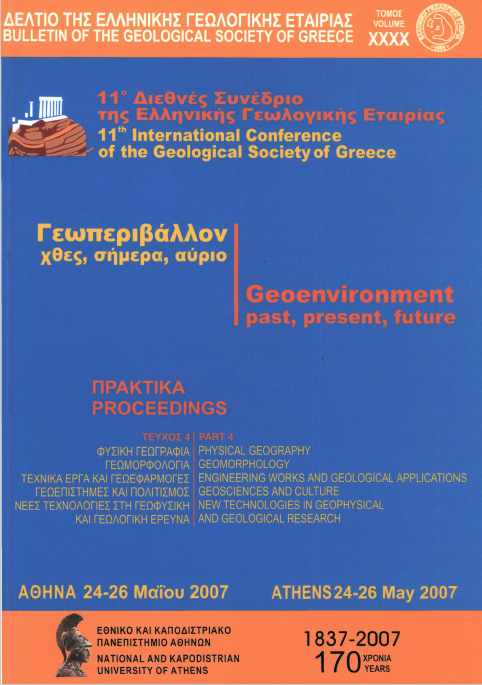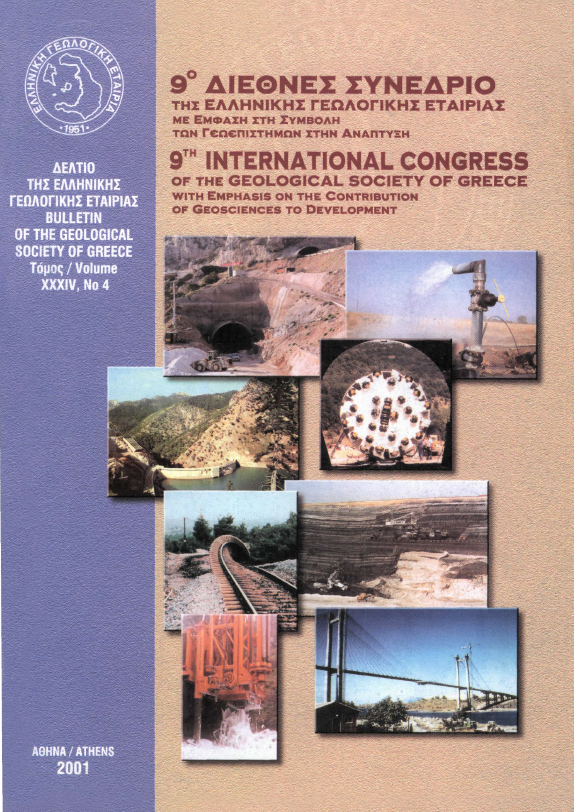MICROSEISMICITY AND SEISMOTECTONIC PROPERTIES OF THE LEFKADA – KEFALONIA SEISMIC ZONE

Abstract
Microseismicity, focal–mechanisms, and previously–published focal parameter data are used
to determine the current tectonic activity of the prominent zone of seismicity in Lefkada and Kefalonia
Islands. Recordings from a local network installed and operated on the two Islands, as
well as from permanent stations there, were used to obtain accurate microseismicity locations,
which in turn is exploited to reveal properties of smaller localized active structures and the
large–scale crustal faulting. The microseismicity substantially agrees with the historic seismicity
and delineates a relatively narrow, major zone of activity that extends along the western
coasts of both Islands. Cross sections were used in order to provide a detailed
characterization of the microseismicity and a high–resolution picture of the seismically defined
structures. For the investigation of the past seismic activity relocation of the hypocenters of
older events was performed, using a reliable velocity model and time delays for the regional stations,
calculated on the basis of the accurately determined focal parameters using the local
recordings. The yielding location improvement contributes to the geometry identification of the
active structures, which were previously obscured by location errors, and which constitute a
critical input for the study area seismic hazard assessment.
Article Details
- How to Cite
-
Karakostas, V. G., Papadimitriou, E. E., Karamanos, C. K., & Kementzetzidou, D. A. (2010). MICROSEISMICITY AND SEISMOTECTONIC PROPERTIES OF THE LEFKADA – KEFALONIA SEISMIC ZONE. Bulletin of the Geological Society of Greece, 43(4), 2053–2063. https://doi.org/10.12681/bgsg.11395
- Section
- Seismology

This work is licensed under a Creative Commons Attribution-NonCommercial 4.0 International License.
Authors who publish with this journal agree to the following terms:
Authors retain copyright and grant the journal right of first publication with the work simultaneously licensed under a Creative Commons Attribution Non-Commercial License that allows others to share the work with an acknowledgement of the work's authorship and initial publication in this journal.
Authors are able to enter into separate, additional contractual arrangements for the non-exclusive distribution of the journal's published version of the work (e.g. post it to an institutional repository or publish it in a book), with an acknowledgement of its initial publication in this journal. Authors are permitted and encouraged to post their work online (preferably in institutional repositories or on their website) prior to and during the submission process, as it can lead to productive exchanges, as well as earlier and greater citation of published work.







